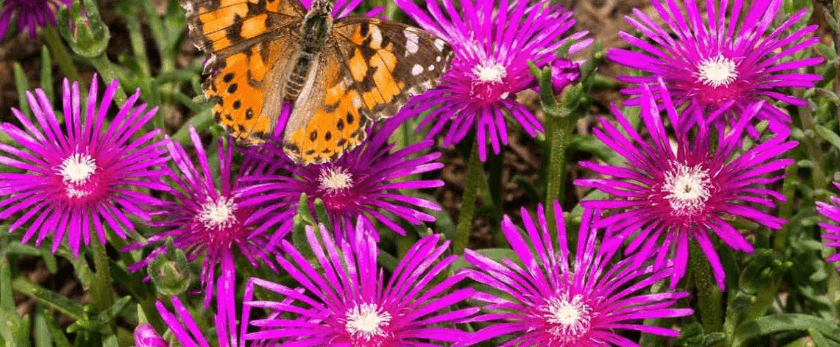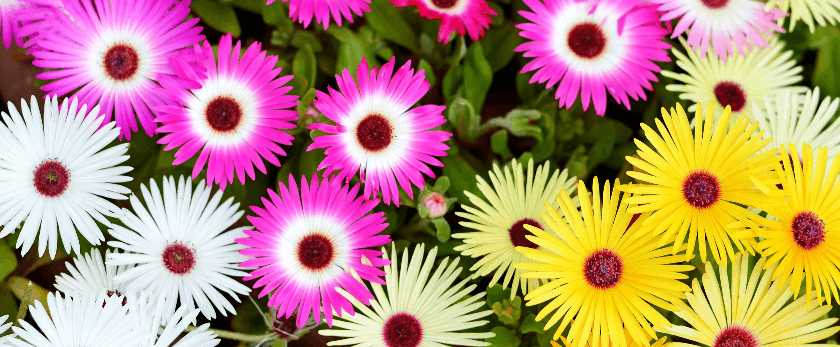Ice plant, also known as Delosperma, is a beautiful and low-maintenance plant that is perfect for adding a pop of color to your garden. It is a succulent plant that is native to South Africa and is well-known for its ability to thrive in hot and dry conditions. In addition to its aesthetic appeal, ice plant also has many environmental benefits, making it a great addition to any eco-friendly garden. In this article, we will discuss how to grow ice plant, including care tips, the best time to grow, and common problems that may arise.
Care for Ice Plant
Watering
One of the best things about ice plant is that it is drought-tolerant, meaning it can survive with minimal watering. However, it is important to water your ice plant regularly during its first growing season to help establish its root system. After that, you can reduce watering to once a week or even less, depending on the climate and soil conditions.
When watering your ice plant, make sure to water deeply, allowing the water to reach the roots. Avoid getting the leaves wet, as this can lead to fungal diseases. It is also important to let the soil dry out between waterings to prevent root rot.
Light
Ice plant thrives in full sun, making it a perfect plant for sunny areas in your garden. It can also tolerate partial shade, but it may not bloom as profusely. If you are growing ice plant indoors, make sure to place it near a sunny window or use grow lights to provide enough light for the plant.
Soil
Ice plant prefers well-draining soil, as it is susceptible to root rot if the soil is too wet. You can use a cactus or succulent mix, or create your own by mixing equal parts of potting soil, sand, and perlite. This will provide the plant with the right balance of nutrients and drainage.
Fertilizer
Ice plant does not require much fertilizer, as it is a low-maintenance plant. However, you can use a balanced fertilizer, such as a 10-10-10, once a year in the spring to give it a boost. Make sure to dilute the fertilizer to half strength to avoid burning the plant's roots.
Pruning
Ice plant does not require much pruning, but you can trim off any dead or damaged leaves to keep the plant looking tidy. You can also prune the plant after it has finished blooming to encourage new growth and more flowers.
Best Time to Grow Ice Plant
The best time to grow ice plant is in the spring, after the last frost has passed. This will give the plant enough time to establish its root system before the hot summer months. If you live in a warmer climate, you can also plant ice plant in the fall, as long as you provide it with enough water during its first growing season.

Common Problems with Ice Plant
While ice plant is a hardy and low-maintenance plant, it can still face some common problems. Here are a few issues you may encounter and how to address them:
- Fungal diseases: As mentioned earlier, ice plant is susceptible to fungal diseases if its leaves get wet. To prevent this, make sure to water the plant at the base and avoid getting the leaves wet. If you notice any signs of fungal disease, such as black spots or powdery mildew, remove the affected leaves and treat the plant with a fungicide.
- Pests: Ice plant is generally pest-resistant, but it can attract aphids and mealybugs. You can remove these pests by hand or use an insecticidal soap to get rid of them.
- Overwatering: Overwatering can lead to root rot, which can be fatal for ice plant. Make sure to let the soil dry out between waterings and avoid watering the plant too frequently.
- Lack of blooming: If your ice plant is not blooming, it may be due to insufficient sunlight or over-fertilization. Make sure to provide the plant with enough sunlight and avoid over-fertilizing.
Responsible Disposal Methods
When it comes to responsible disposal methods for ice plant, it is important to note that this plant is considered invasive in some areas. This means that it can spread quickly and take over native plant species, disrupting the ecosystem. Therefore, it is crucial to dispose of ice plant properly to prevent it from spreading to new areas.
If you are removing ice plant from your garden, make sure to bag it and dispose of it in the trash. Do not compost it or throw it in the yard waste bin, as this can lead to the plant spreading to new areas. If you are unsure about the invasive status of ice plant in your area, you can contact your local extension office for more information.
Conclusion
Growing ice plant is a great way to add beauty to your garden while also contributing to a more eco-friendly lifestyle. With its low-maintenance nature and environmental benefits, it is a perfect plant for both experienced and novice gardeners. By following the care tips mentioned in this article and being mindful of responsible disposal methods, you can enjoy the beauty of ice plant while also helping to preserve the environment for future generations.










